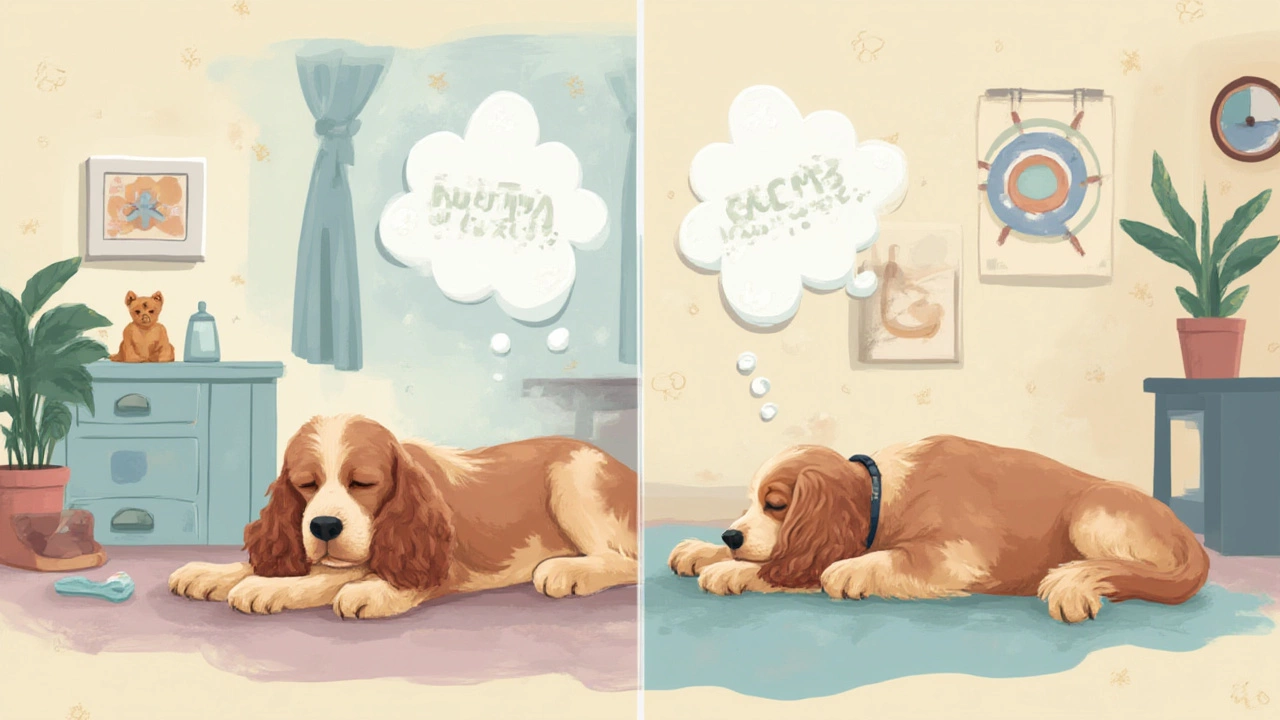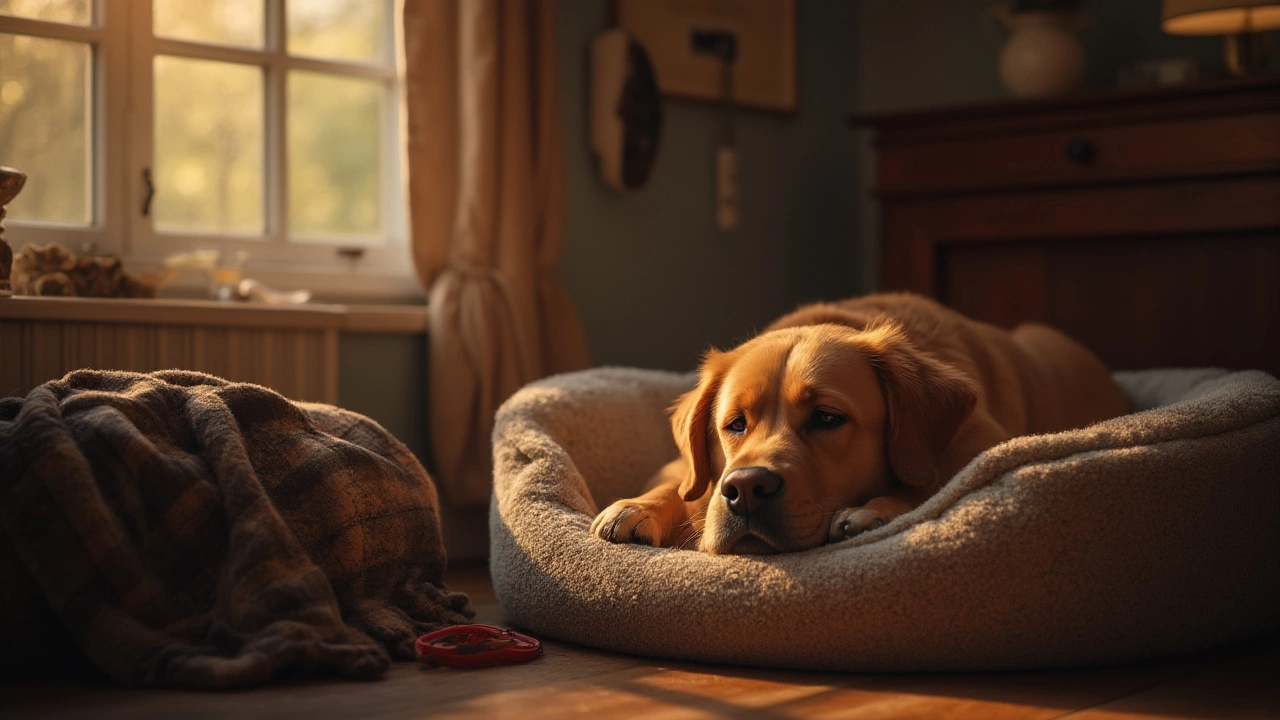If you’ve ever stood at the foot of your bed, caught between the ritual of undressing your dog and your own weary longing for sleep, you know exactly how weirdly emotional this question feels: should you take your dog’s collar off at night? There are folks on both sides of the fence—some devoted to naked-necked bliss, others convinced the jingle of tags is a necessary security blanket. And sometimes this small decision spirals into a whole internal debate that makes you feel like you’re prepping for a science presentation at school all over again. So, let’s really pull back the covers on this nightly dilemma—grounded in real-world facts, and not just guesswork or a stranger’s opinion on Facebook.
Why Do Dogs Wear Collars—and Do They Need Them 24/7?
Collars have been around for centuries because, honestly, they just work. Ancient Egyptians decorated their dogs with collars as a status symbol and as a tool to keep pets safely tethered. These days, most collars do a lot of heavy lifting: identification, easy leash clipping, and of course, showing off a dog’s personal style—from cute tartans to reflective neon. You probably already have your dog’s registration, microchip tag, and council details dangling from theirs (especially if you live in places like Auckland where it’s required by law).
But does this 24/7 wardrobe really make sense? For many Kiwis, our homes are already dog-proofed better than a toddler could hope for—locked gates, fenced boundaries, or an extended family roster who all know your pup by name. The hum of safety alarms and inner-city microchips means that, for lots of families, the risk of a midnight Houdini act is pretty slim. Besides, most dogs are happily crashed out at your feet or curled up in their dog bed for a good chunk of the night.
Thousands of vets—including New Zealand’s Vet Council—say collars are a must-have for outdoor, unsupervised, or adventurous pups. But in the safety of home, when the stars are out and everyone’s winding down, constantly wearing a collar can sometimes cause a few surprising issues. There’s more to this debate than most people think.

Pros and Cons: Sleeping with a Collar On vs. Off
Let's talk about the upsides first. Keeping your dog’s collar on at night seems smart if you're worried about emergency escapes, unexpected guests, or earthquakes (yep, it’s New Zealand—the ground sometimes does more than just shake your cuppa). If your front door has a knack for popping open with a gust of wind, ID tags attached to the collar could make all the difference in a reunion. Some people even swear that the cling-clang of their dog's tags is like a nighttime reassurance—proof of snoring, safe, and sound.
But keep in mind, collars aren’t always as harmless as they look. Collar-related injuries crop up more than you might expect, especially overnight when nobody’s watching. In 2023, a vet survey in Australasia revealed that 13% of collar injuries reported happened while pets were unsupervised at home—things like tags catching on crate wires, collars getting tangled in bedding, or multiple pets roughhousing their way into a scary entanglement. Even a well-fitting collar can leave imprints on sensitive necks or trigger skin infections and fur loss after months or years of day-and-night wear. Think about how uncomfortable you’d feel sleeping every night in a tight necklace or with jingling earrings digging into your pillow. Dogs have nerves, skin folds, and an itch to stretch out just like us. So, it makes sense that collarless naps might lead to better rest and fewer bald patches.
Of course, not every dog is the same. Pups with long, curly fur might matt up under a collar after a sweaty night, while slim breeds can actually chafe if their collar shifts too much. If you’ve got a large, bouncy dog or a puppy who’s still learning "don’t eat the furniture," taking the collar off at bedtime might be a treat for their comfort—and your wallet. For households like mine, where our Darcy turns into a midnight ninja, we take the collar off to save the furniture (and the dog) from unnecessary snags and midnight drama.
Here’s what some of the studies and surveys say about risks vs. benefits:
| Potential Benefit | Potential Issue |
|---|---|
| Quick identification if dog escapes | Collar can cause hair loss and skin irritation |
| Gives peace of mind during emergencies | Risk of collar getting caught on furniture or crates |
| Proof of registration for compliance | Matted fur and discomfort, especially in long-coated breeds |
| Easy, instant leash access for nighttime trips | Possible choking hazard for playful dogs or multi-pet homes |
Some dogs simply sleep better with nothing on—more room to stretch, less risk for hot spots, and no clinking tags every time they roll over. Others seem unbothered and don’t even notice their collar is there. There’s no right or wrong answer that fits everyone, but knowing what to watch for (like checking under the collar for irritated skin, or feeling for tightness every week) helps you make a choice that fits your dog's personality and your routine.

Tips for Night-Time Collar Decisions: Comfort, Safety & Best Practices
If you’re on the fence, here are some practical things you can do—straight from vet nurses, dog trainers, and sleep-deprived parents who have seen it all. First, check how your dog reacts. Do they sigh in relief when you pop off the collar at night? Or do they hang around looking for it in the morning? Watch for scratching, rubbing, weird sleeping positions, or marks and fur flattening underneath. Those are all signs your dog might appreciate a collar break.
If you decide to remove the collar, make it part of your evening routine, just like brushing teeth or setting out Darcy’s favorite plush toy. Having a set spot (a “collar basket” or a hook near the door) means you’ll always know where it is for those late-night potty breaks. And if earthquakes or sudden emergencies are a concern, you could get a breakaway collar or keep ID tags on a snug slip-on harness by the door. Smart tags (chips that work with your smartphone) are another cool upgrade, though you’ll still need a regular old-fashioned tag for public compliance if you ever rush out in a hurry.
If your household has more than one animal, definitely pay attention to the way they interact. Playful tugging and nightly pile-ups can turn collars into accidental traps, especially for puppies or cats that love to chase. Breakaway collars—designed to snap open under pressure—are an excellent answer for anyone with mischief-makers in the house. These have become standard in many Auckland shelters after several reports of unexpected entanglements just during those quiet nighttime hours.
Got a dog that scratches at their neck or often has red patches under the collar? Switching to soft, flexible materials (like rolled leather or neoprene) could help. Loose collars cause rubbing, while snug ones might be uncomfortable—so you want to slip two fingers underneath, no more and no less. And always double-check those tags, as jagged edges can work their way into fur and skin overnight, causing infections you won’t spot until it’s too late. Discreet silicone tag sleeves now exist to quiet the jingle and add a little cushion.
For households with “flight risk” pups or those who snooze on the terrace, a collar at night is probably still the safest bet. But for the average inside dog—especially the pampered couch sleepers or those who nest in crates—a collar break brings better sleep and (bonus) longer-lasting collars. Life in Auckland can get damp and muddy pretty fast; rotating two collars and giving each a break overnight helps reduce mildew and keeps things fresher for longer. Over 58% of Kiwi dog owners now rotate collars to cut down on odors and skin reactions, according to a 2024 pet wellness poll here in New Zealand.
- Inspect under your dog’s collar weekly, even if you never take it off.
- Wash collars regularly—smelly, dirty collars are a breeding ground for bacteria.
- Switch to breakaway or soft fabric collars for “at home” use, especially for puppies or seniors.
- Keep ID up to date but opt for lightweight tags, or cover noisy metal with soft sleeves.
- If your dog double-duties as a guard dog, consider a reflective collar for quick night-time checks.
So here’s the thing—there are real benefits both ways. The gold standard is a solution that’s tailored to your pup, your house, and your local lifestyle. Check often, stay flexible, and remember that your dog’s comfort and safety means you both get a better night’s sleep.
